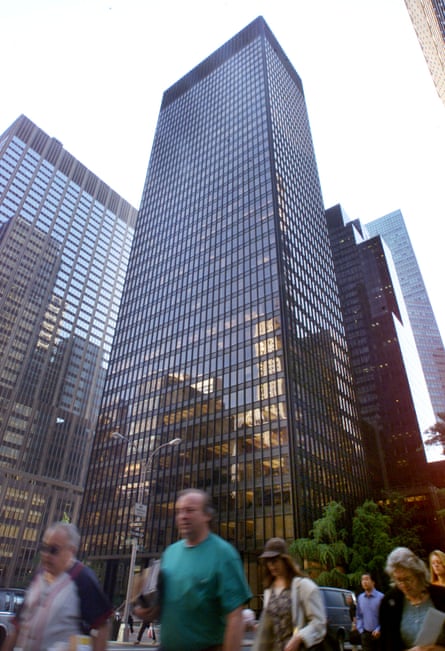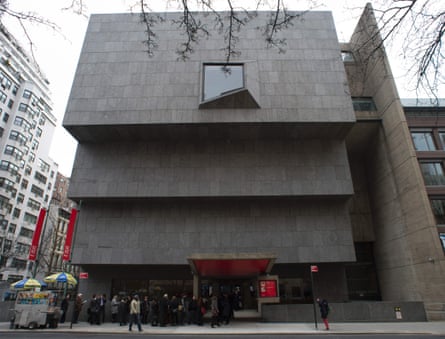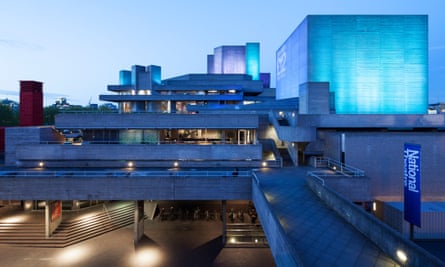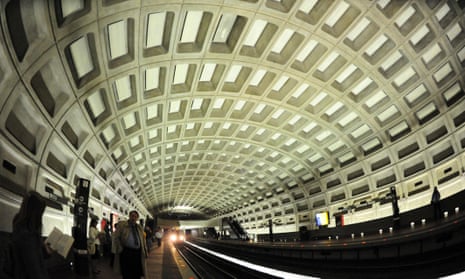Mies van der Rohe was born first, in 1886, in Aachen, Germany. Le Corbusier arrived the following year, and 250 miles to the south, in La Chaux-de-Fonds, Switzerland. Mies went on to become the godfather of the steel-and-glass international style; Corbu, enamored with the possibilities of concrete, essentially created brutalism. Which means that not only were the two architects great builders in their own right; they were also responsible for creating the greatest sibling rivalry in the history of architecture.
Le Corbusier’s brutalism took an early lead, not least because of concrete’s cost advantage: it is cheap and abundant, the second most consumed material in the world, after water. Brutalism also had the art-historical advantage of fitting easily into a centuries-long narrative. The monumental brutalist vaulting of the Washington Metro, for instance, is uncannily similar to that found in largest concrete dome in the world – the 2,000-year-old Pantheon, in Rome.

Yet by the 1960s, when both movements really hit their stride, it was the international style that was in the ascendant. Mies had given New York City the Seagram Building, “the millennium’s most important building”, according to Herbert Muschamp of the New York Times. Citizens of modern cities on every continent started looking up and seeing shimmering sheets of glass, as their formerly parochial towns were transformed into something resembling the Emerald City from The Wizard of Oz. A new international phenomenon emerged: the modern skyline, comprising buildings that aspired to float – effortlessly, impossibly – upwards, in a reverie of light and transparency. This, surely, was the golden future. The lucky few were part of it already, and everybody else wanted in.
Meanwhile, the 99% (although they didn’t call themselves that at the time) found themselves raising families in suburban concrete housing estates that were direct descendants of Corbusier’s Unité d’habitation, or housing unit, in Marseille. The impetus behind such buildings was just as idealistic as any Miesian tower, but concrete architecture is unforgiving, and budgets were tight, and no one ever bothered to consult the people whose lives were ostensibly being improved.

The result was that brutalism, in the public mind, became the architecture of a forgotten underclass: windswept plazas, crumbling concrete, ugly dystopian soullessness. Far from being something to aspire to, it was something to escape from. The name didn’t help: even though it derives from the French béton brut, for raw concrete, it still connotes brutality. The architecture could be pretty brutal too: hulking, massive, monumental. Certainly by 1981, when Tom Wolfe published From Bauhaus to Our House, brutalism had become something to hate, a symbol of everything that was wrong with modern architecture.
The story, however, does not end there. The international style evolved, and not well. What used to be aspirational started becoming an in-your-face statement of conspicuous consumption. The gauche gaudiness of was embraced not only where you might expect it (the Wynn towers of Las Vegas, say), but also in places with real history, such as New York City. Go to Columbus Circle today, for instance, and you’ll see Christian de Portzamparc’s billionaire condos at One57 face off against “a 1950s international style glass skyscraper in a 1980s gold lame party dress,” as Muschamp described the Trump International Hotel. Such erections generate almost as much hatred today as the worst mistakes of brutalism did in the 1960s, and understandably so: they represent a world in which the more obtrusive and ostentatious you are, the more profit you make.
The international style, deservedly or not, is bearing the brunt of the global backlash against rising inequality at all levels of society. Gentrification has become a dirty word, and nothing exemplifies gentrification more than some new steel-and-glass tower going up in the middle of a tight-knit middle-income community. The openness and transparency ostensibly espoused by the architectural vernacular fool no one: these “residences” are sealed off from their neighborhoods, shiny bubbles of wealth and privilege invariably protected from their less salubrious neighbors by multiple layers of security.

Thus was the stage set for the resurgence of brutalism. You can’t put a brutalist building in a gold lame party dress: raw concrete is raw concrete. It’s down-to-earth, honest, unpretentious, egalitarian, and creates buildings rooted in place: Boston City Hall, New York’s Whitney Museum (now the Met Breuer), the city of Brasília.
Unlike steel and glass, concrete has terroir: the reddish concrete of Boston, for instance, looks and feels very different from the fine-grained concrete of Japan. You take the local rock, bind it with cement and water, and there you have your concrete. Its very nature is local rather than blandly international.
When they’re treated with care and respect, brutalist buildings can become treasured by a city in a way that glass-and-steel towers very rarely are. In London, for instance, locals and tourists alike swarm to the concrete cultural buildings on the south bank of the Thames at Waterloo Bridge. These masterpieces – the Royal Festival Hall, the Hayward Gallery, Denys Lasdun’s National Theatre – are a beloved part of the capital, a destination even for people with no particular reason to go there.
A similar possessiveness can be found in residential architecture. Consider Rupert Murdoch, a man who seemingly buys and sells New York homes as a hobby, never staying in one too long, and sometimes never moving in at all. In London, by contrast, he has lived in a Lasdun-designed brutalist apartment block overlooking Green Park for decades, which I very much doubt he will ever sell.

Great brutalist buildings, it turns out, have soul, in a way that antiseptic glass curtain walls never will. And they have undeniable power, too. Consider Peter Eisenman’s haunting holocaust memorial in Berlin: it would be unthinkable in anything but concrete.
Brutalism is protean, as well. With concrete, anything is possible, and astonishing new ideas can emerge at any time: consider Olafur Eliasson’s Studio Other Spaces, which has developed a technique to cast huge chunks of glacial ice in concrete. When the ice melts, it leaves a series of gorgeously textured irregular spaces. The raw-concrete interiors formed using this technique are like nothing the world has ever seen.
Most subversively, brutalism is old. If you move into a brutalist building today, there’s a very good chance that it was built 50 years ago. Certainly contemporary architects such as Peter Zumthor continue to do wonderful work in the same vein, alongside greats like Tadao Ando. But venture to the heart of brutalism and you won’t find brand names and starchitects and buildings of preternatural beauty. Instead you’ll find thousands of much humbler structures, characterized by simplicity, functionality and what-you-see-is-what-you-get directness.
Brutalism today has developed a unique ability to cut across class divides. Blue-collar workers and billionaires alike appreciate its charms even if they are sometimes frustrated by its inflexibility; are attracted to its plainness while being inspired by its palpable integrity.

It’s easy to see, then, how brutalism is flourishing in the age of Occupy. But there’s another force driving the brutalist resurgence, which is maybe less austere and selfless: photography, in general, and Instagram, in particular.
If you’ve seen High-Rise, the 2015 Ben Wheatley adaptation of JG Ballard’s novel, you will surely remember the vision of Tom Hiddleston’s smooth yet chiseled naked body as seen from above, framed by a raw-concrete balcony. The intersection of the organic with concrete makes for striking visuals, and even concrete on its own has stunning visual power. Something as simple as a shadow packs a much harder punch when it falls across a beautifully textured grey background.
Say what you like about brutalist buildings, you have to admit they look gorgeous in photographs and in coffee-table books such as This Brutal World, recently published by Phaidon. Brutalism might still be a bit austere for many people’s taste. But when you live in something that good looking, you can’t help but feel a little bit of glamor by association.

Comments (…)
Sign in or create your Guardian account to join the discussion